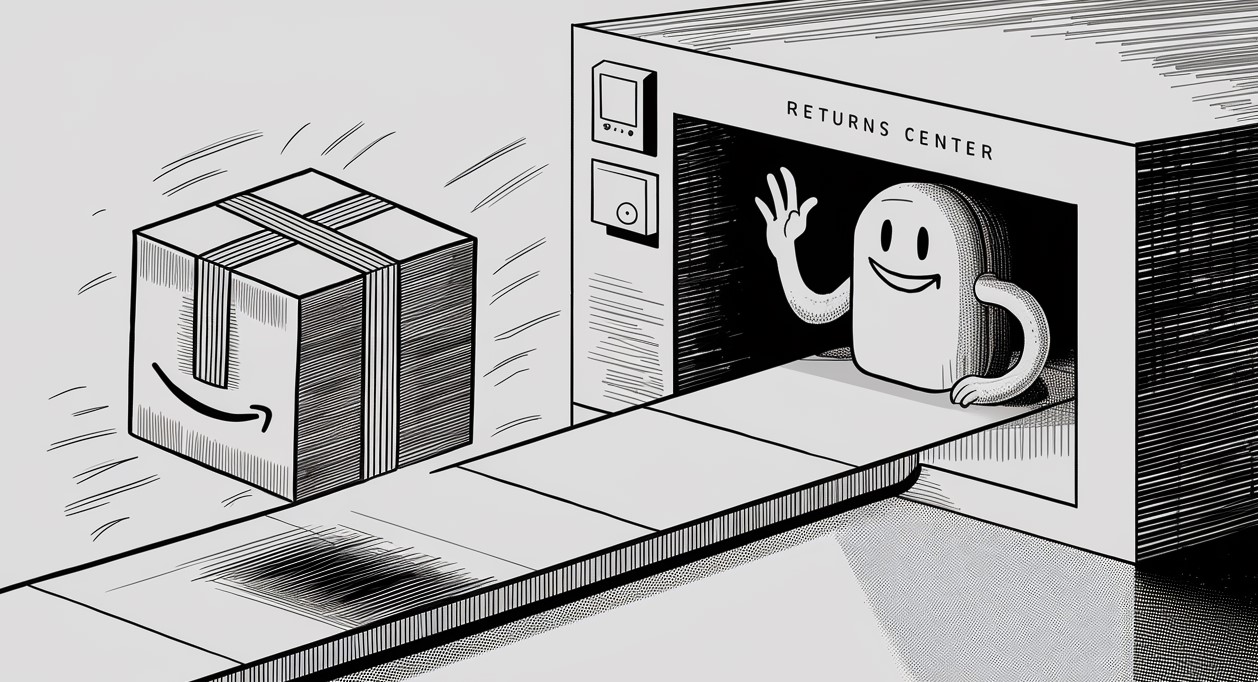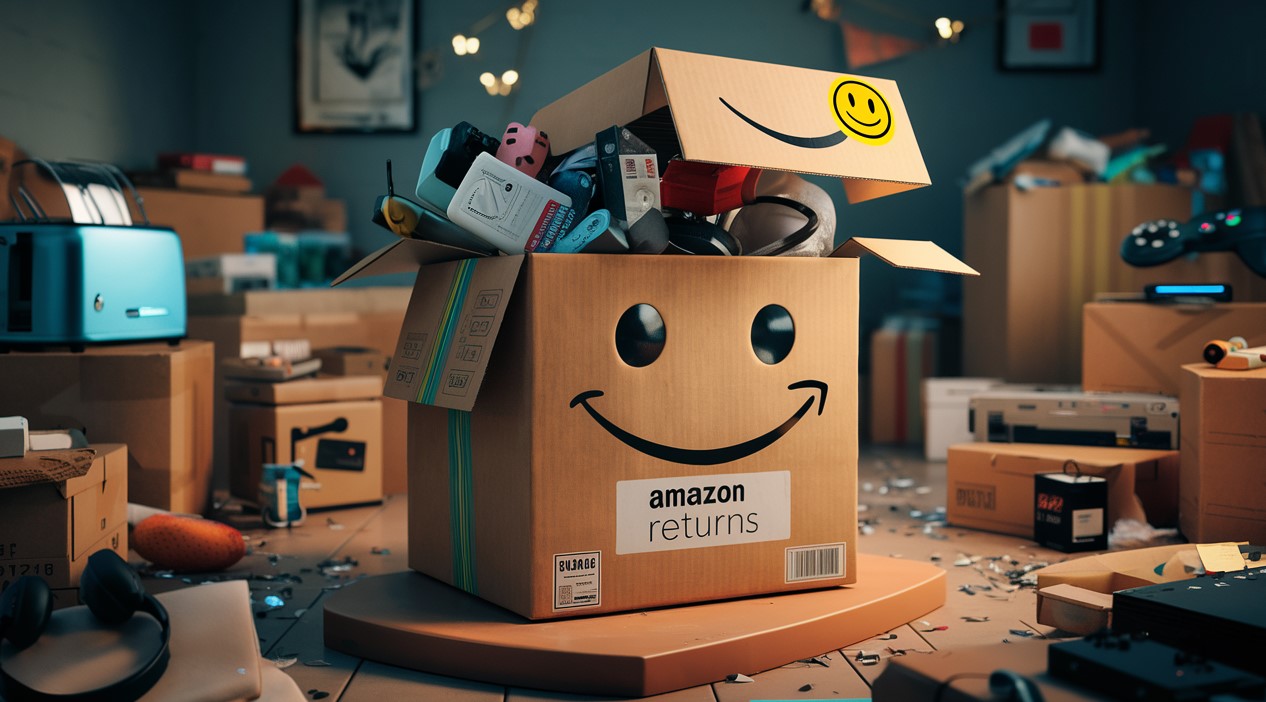When you send a package back to Amazon, it’s natural to wonder what happens next in the process of Amazon Returns. After you initiate an Amazon Return by logging into your account and choosing the item to return, you need to package the product securely and send it back. The return journey begins with Amazon receiving the package and starting an inspection. This inspection is crucial as it determines whether the item can be resold, needs to be sent to liquidation, or must be recycled or disposed of. The steps involved in handling Amazon Returns ensure that each item is processed according to its condition, which helps Amazon manage its inventory efficiently.
In the broader scope of Amazon Returns, the process not only benefits customers by allowing them to return unwanted or defective items but also aids Amazon in understanding product performance and customer preferences. Amazon Returns contribute to managing waste and sustainability goals by repackaging and reselling items that are still in good condition. However, managing a large volume of returns, especially during peak seasons, poses logistical challenges. Ensuring that returned items are handled correctly while minimizing environmental impact remains a priority for Amazon, making the process of Amazon Returns a critical aspect of their operations.
What Are Amazon Returns?
Amazon Returns are when you send a product you bought back to Amazon. This process starts after you decide that the item is not right for you. It could be because the item is damaged, doesn’t fit, or you simply changed your mind. Here’s a simple breakdown of what happens with Amazon Returns.

How Does the Amazon Returns Process Work?
Starting Amazon Returns
The first step in Amazon Returns is to log into your Amazon account. You can do this on a computer or phone. Once logged in, you need to find the order you want to return and click the “Return or Replace Items” button. After that, you’ll follow the instructions to complete the return process. You might need to choose a reason for the return, like “Item is defective” or “Changed my mind.”
Packaging Your Amazon Returns
Once you’ve set up your Amazon Return, you need to package the item carefully. Amazon usually sends you a return label that you need to attach to the package. Make sure to pack the item securely so it doesn’t get damaged on its way back. Proper packaging helps in processing the Amazon Returns smoothly.
Shipping Amazon Returns
After packing the item, you send it back to Amazon. Amazon offers several ways to send the package, like dropping it off at a local post office or a special return location. The choice of how to send your Amazon Return might depend on where you live and what’s most convenient for you.
What Happens After Amazon Receives the Return?
Inspecting Amazon Returns
When Amazon gets the returned item, they start by inspecting it. This means checking the item to see if it’s still in good shape. If the item looks new and works well, Amazon might put it back into their store to sell as a new product. If it’s not in perfect condition, Amazon decides what to do next based on the item's state.
Processing Amazon Returns
For items that are not in perfect shape, Amazon might list them for sale in their Amazon Warehouse. These items are usually sold at a lower price because they are not new. This helps people find good deals and also helps Amazon reduce waste. Items that cannot be resold might be sent to liquidation companies or disposed of if they are too damaged.
Handling Amazon Returns That Can’t Be Resold
If an item is too damaged to be sold or recycled, it might be disposed of. Amazon tries to recycle as much as possible, but some things just can’t be recycled. This is why it’s important to pack items well and return them in good condition.
Why Are Amazon Returns Important?
For Customers
- Amazon Returns give customers the chance to get their money back or exchange an item if it’s not right. It makes shopping more flexible and less risky. If you get an item you don’t like or need, you can easily return it and get something else.
For Amazon
- Amazon Returns help Amazon manage their inventory better. By inspecting and processing returns, Amazon can figure out what items are popular and what kinds of problems customers face. This information helps them improve their services and products.

The Big Picture of Amazon Returns
Benefits of Amazon Returns
Amazon Returns are beneficial for everyone involved. They provide a way for customers to get refunds or exchanges, help Amazon manage inventory, and contribute to reducing waste. By processing returns carefully, Amazon ensures that both customers and the company are happy.
Challenges with Amazon Returns
Managing Amazon Returns can be challenging, especially during busy times like holidays. Amazon must handle a large number of returns quickly and efficiently. This involves a lot of work to inspect, process, and decide what to do with each returned item.
Environmental Impact of Amazon Returns
The process of returning items does have an environmental impact. The shipping, processing, and possible disposal of products all contribute to a carbon footprint. Amazon is working to make this process more sustainable and reduce the impact on the environment.
In summary, Amazon Returns involve several steps, from starting the return to inspecting and processing the returned items. Understanding this process helps make shopping with Amazon easier and more transparent. Whether you're sending something back because it’s not right or just curious about what happens next, knowing about Amazon Returns can help you make the most of your shopping experience.
Return Policies and Guidelines
Making Amazon Returns, it's important to follow their policies and guidelines. Each product may have specific return conditions, and adhering to these rules helps ensure that your return is processed smoothly. For instance, some items may have a shorter return window or require that they be returned in their original packaging. Always review the return policy for the specific product you're returning.
Return Shipping Costs
Amazon provides free return shipping, but this can vary depending on the item and the reason for the return. If the return is due to an error on Amazon’s part or a defective product, they typically cover the shipping costs. However, if you’re returning an item simply because you changed your mind, there might be a return shipping fee. Always check if there are any associated costs before sending the package.
Innovations in Amazon Returns
Amazon is constantly working on improving the returns process. They are exploring new technologies and methods to make returns easier and more efficient. For example, Amazon has introduced features like drop-off points and automated return kiosks to streamline the return experience for customers. These innovations aim to reduce the time and effort involved in making Amazon Returns.
Customer Feedback on Amazon Returns
Customer feedback plays a crucial role in shaping the Amazon Returns process. By sharing their experiences, customers help Amazon understand what works well and what needs improvement. Positive feedback can lead to enhanced services, while suggestions for improvement can help address any issues in the returns process.
Future of Amazon Returns
Looking ahead, Amazon is focused on making returns even more user-friendly and environmentally responsible. They are investing in technologies to improve efficiency and reduce waste. The goal is to create a returns process that is quick, easy, and sustainable for everyone involved.
Practical Tips for Amazon Returns
To make the most of your Amazon Returns, here are a few practical tips:
- Check the Return Window: Ensure that your return is initiated within the allowed time frame.
- Keep Packaging Materials: If possible, keep the original packaging until you’re sure you’re keeping the item.
- Use Return Tracking: Always get a tracking number for your return to monitor its progress and ensure it arrives safely.
How to Handle Return Disputes
If there are issues with your return, such as a missing refund or problems with the return process, contact Amazon’s customer service. They can help resolve disputes and ensure that your return is handled correctly. Keep records of all communication and tracking information to support your case.
Impact of Seasonal Returns
During peak seasons like holidays, the volume of Amazon Returns typically increases. This can lead to longer processing times and potential delays. Planning your returns ahead of time and being patient can help manage any seasonal challenges.
Final Thoughts on Amazon Returns
Amazon Returns are a crucial part of the shopping experience, allowing customers to send back items that don’t meet their expectations or needs. By understanding how the process works and following the guidelines, you can ensure a smooth return experience. Amazon’s commitment to improving returns and sustainability reflects their dedication to customer satisfaction and environmental responsibility.
Whether you’re returning a gift, an item that didn’t work out, or something that arrived damaged, knowing the ins and outs of Amazon Returns helps you navigate the process with confidence. Remember, Amazon is always working to enhance their services, making returns easier and more efficient for everyone involved.
FAQ
Can I Return an Item Without the Original Packaging?
Yes, you can return an item even if you don’t have the original packaging. However, the condition of the item and packaging can affect how it is handled. Sometimes, items without their original packaging might be sold in different ways or sent to recycling.
How Long Does It Take to Get a Refund for Amazon Returns?
After Amazon gets your returned item, it usually takes 3-5 business days to process a refund. The time it takes for the money to show up in your account can vary based on how you paid. If you used a credit card, it might take a few more days for the refund to appear.
Are There Items That Cannot Be Returned?
Yes, some items cannot be returned for safety or other reasons. This includes items like personal hygiene products, perishable goods, and certain digital products. Always check Amazon’s return policy before buying these items.
What If My Return Is Lost in Transit?
If your return gets lost while being sent back to Amazon, you should contact Amazon customer service. They can help you track the package or issue a refund or replacement if necessary. Using Amazon’s return methods usually makes this process easier.
